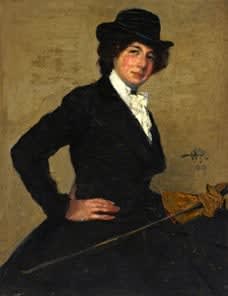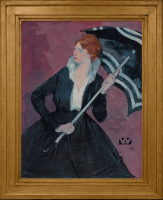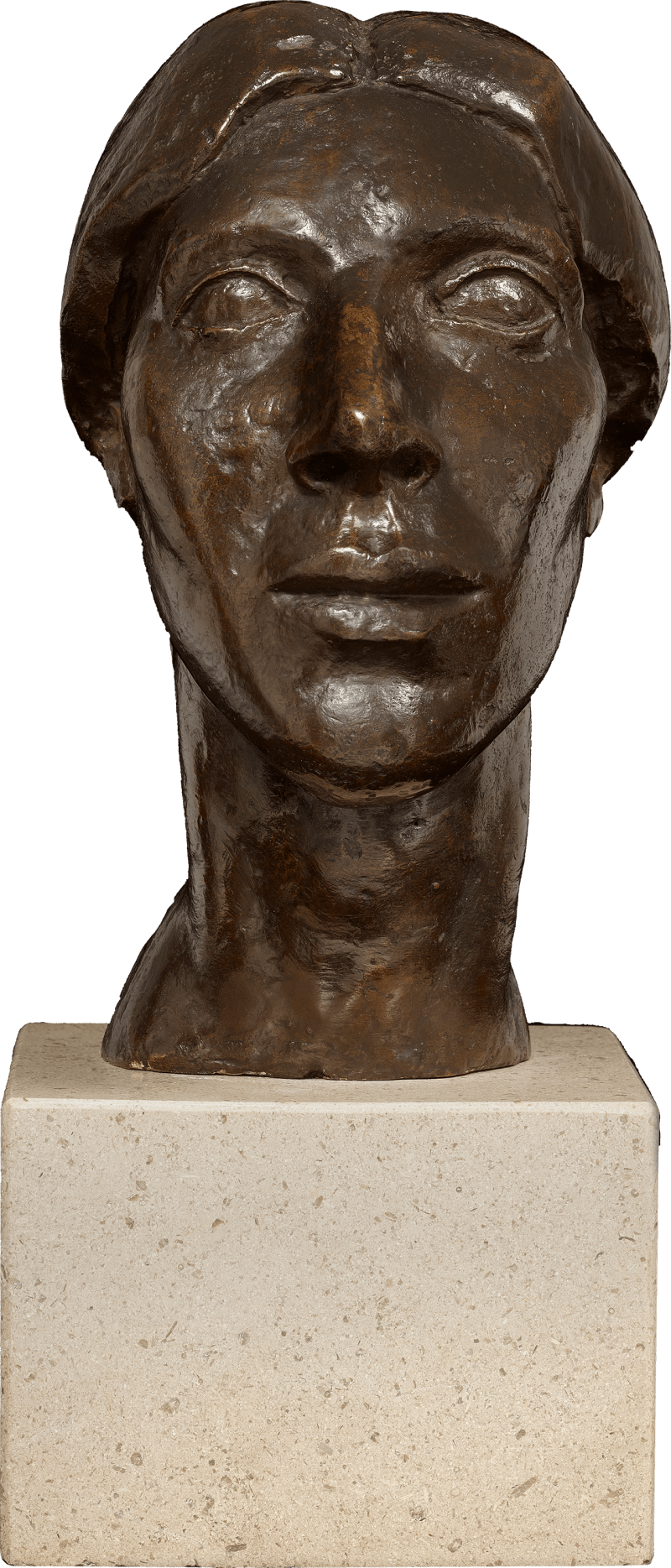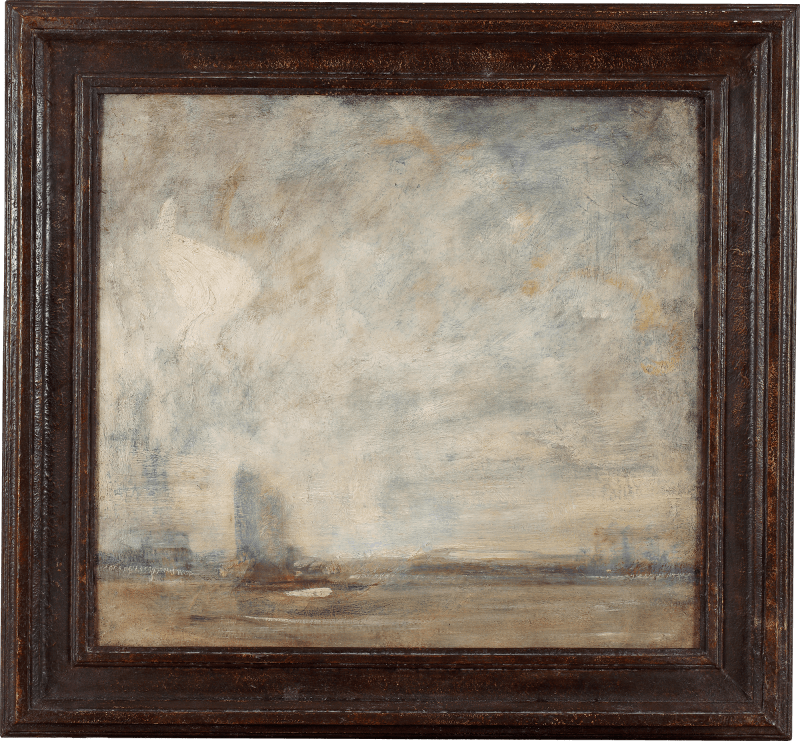This striking portrait of Esther Konstam (1876 - 1961), painted by Alfred Wolmark in 1915, exemplifies the artist’s strikingly modernist style. The painting, which remained in the collection of Wolmark’s family until only recently, showcases his distinctive fusion of vivid colour and bold composition.
Born in Belgium, Esther Konstam moved to England as a child when her father entered the Stock Exchange just in time for the Gold Boom.[1] In England, she married Alfred Kohnstamm (1873 - 1944), who had emigrated from Germany and established a successful leather business with his brother. The Kohnstamm family became great friends and patrons of Wolmark – Wolmark became a frequent visitor to the Konstam home, known as ‘Wally’ to Esther’s children.[2] Esther was described by her children as ‘always beautifully dressed’, [3] with her hair ‘piled on top of her head’.[4] Here, she is captured with theatrical poise, holding a striped parasol against a richly textured magenta backdrop, dressed in a sweeping...
This striking portrait of Esther Konstam (1876 - 1961), painted by Alfred Wolmark in 1915, exemplifies the artist’s strikingly modernist style. The painting, which remained in the collection of Wolmark’s family until only recently, showcases his distinctive fusion of vivid colour and bold composition.
Born in Belgium, Esther Konstam moved to England as a child when her father entered the Stock Exchange just in time for the Gold Boom.[1] In England, she married Alfred Kohnstamm (1873 - 1944), who had emigrated from Germany and established a successful leather business with his brother. The Kohnstamm family became great friends and patrons of Wolmark – Wolmark became a frequent visitor to the Konstam home, known as ‘Wally’ to Esther’s children.[2] Esther was described by her children as ‘always beautifully dressed’, [3] with her hair ‘piled on top of her head’.[4] Here, she is captured with theatrical poise, holding a striped parasol against a richly textured magenta backdrop, dressed in a sweeping black gown with a sharply ruffled collar. She dominates the composition, embodying the modern values shared between artist and sitter.
Wolmark trained at the Royal Academy Schools but broke decisively with academic conventions following a transformative trip to France in 1911. Influenced by the Fauves and Post-Impressionists, he adopted a bold, non-naturalistic palette, heavy impasto, and flattened spatial arrangements. His work from this period, particularly his portraiture, is notable for its combination of modernist experimentation and a decorative sensibility. As noted by the editors of Rediscovering Wolmark: A Pioneer of British Modernism, Sarah MacDougall and Rachel Dickson: ‘By 1915 Wolmark had begun to work on theatre, costume, poster and ceramic designs, providing vibrant graphic images and decorative schemes that incorporated areas of bright, flattened colour, often interspersed with, or delineated in, black.’[5] In this portrait, the interplay of stylised form and vibrant colour suggests a deliberate balance between representation, design and increasing abstraction. The strong diagonal division of the composition, emphasised in this case through the umbrella pole, was a device often employed by Wolmark [see fig. 1] and adds dynamic movement to the present work.
This work featured prominently in the Ben Uri Gallery’s 2004 retrospective of Wolmark’s work and appeared on the cover of the accompanying catalogue. Today, it stands as a key example of Wolmark’s contribution to British modernism and his ability to translate the influence of continental movements into a distinctive, personal language. Through both sitter and style, the painting encapsulates a moment of cultural transformation and artistic innovation.
[1] H. W. Austin and Phyllis Konstam, (1969) A Mixed Double. London: Chatto and Windus, p.36.
[2] Ibid., p.35.
[3] Ibid., p.36.
[4] Ibid.
[5] Rachel Dickson and Sarah MacDougall, (2004) ‘Hurrah for the new art! The emergence of Wolmark the colourist’, in Rediscovering Wolmark: A Pioneer of British Modernism, 2004-05. London: Ben Uri Gallery, p.41.













